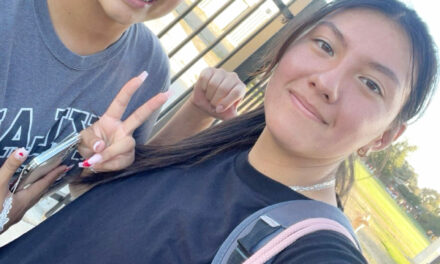On my first day of school, I walked into first period just to see a girl wearing a hideous neon orange shirt. Not thinking much of this, I walked around campus just to see that there were more than enough girls wearing the same shirt. I asked around to find out why girls would be wearing such appalling shirts, just to find out that these were the shirts given to students who were dress-coded.
In recent times, the dress code at Los Banos High School has picked up a lot of controversy. The question is not whether a school should have a dress code. Lawyers cannot wear pajamas to court and mechanics cannot wear a suit to weld. The dress code policy states that “appropriate dress is necessary for a healthy, safe and undisturbed operation of the school day,” and many believe that a dress code is necessary to maintain a professional environment at school while allowing students to have the freedom to express themselves. But are the actions taken to enforce the dress code victimizing as many students suggest? The dress code is typical when it comes to its application in the high school, and the foundation of Los Banos High School’s dress code does not stand out from other schools. However, many students insist that the manner in which it is implemented has a greater psychological effect than what meets the eye.
The disciplinary actions regarding the dress code include: the student to call home for a change of clothes or be provided with a school shirt, lunch detention with a correction of dress code violation, parent conference with administration, and 30 minute after-school workshops per violation.
In one instance, I had witnessed a girl getting dress coded for wearing a skirt. Later that day, I had seen a boy wearing a skirt of the same length, but was he dress coded? No. Was the school possibly reluctant to dress code him with worry about being politically correct? Or was the school just setting a double standard for boys and girls?
In another situation, a girl had been spoken to about her cropped top, whereas a boy had been freely walking around in a deep cut muscle tee.
During a passing period, the five minutes students have to get to their next period, I saw an administrator pointing to students passing and yelling, “You!” then pointing at another girl “You!” and having them stand with the administrator until there were up to three to four girls that were dress coded. This made many students question whether the dress code is designed to exert an “undisturbed operation of the school day.” Doesn’t barking at students in this manner take away from instructional time? On top of this, does behaving this way towards students to enforce a rule that does not have an ill-intended motive make students feel embarrassed, insecure, and belittled?
I spoke to a senior at Los Banos High School, Carissa Castro, and she stated, “I believe the dress code is victimizing women” and “studies and personal experience demonstrates that the dress code is a truly double standard between boys and girls. Forcing a young girl to cover up creates extreme self-consciousness. Students should be able to express themselves through clothing since confidence is key in succeeding.” Suggesting that while the dress code may be necessary, it should be executed in a different manner so that students are not treated in the way that they have been and that it should be enforced equally across all genders and identities.
I spoke to a well-regarded teacher at Los Banos High School, Kevin Coleman, who said “the dress code is needed at this site for safety and the school environment. There could be a lot better ways in which the school handles implementation or the message of dress code. Students need to know why the dress code is needed, and on the flip side, students should be allowed to talk about their concerns with it. I do believe that the school held a student committee last year that allowed students to help craft this current version of the dress code.” To which Carissa also commented, “Despite my beliefs challenging the dress code, I applaud the staff here at Los Banos High School for always listening to what the students have to say regarding the dress code” and “the dress code goes beyond our district and is an issue society faces.” Proposing that if a dress code should be carried out, that it should be done in a manner regarding the social and mental consequences that face students and their educational environment.


